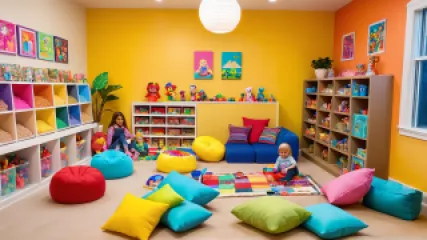Step-by-Step Tutorial on Effective Play Therapy Techniques
Play therapy is an effective intervention used by therapists to help children express their feelings, process experiences, and develop coping skills through play. This step-by-step tutorial aims to provide a comprehensive guide on various play therapy techniques that can be utilized to support child mental health.
Whether you are a professional therapist, a parent, or an educator, understanding these techniques can empower you to create a nurturing environment for children experiencing emotional or behavioral challenges. Throughout this guide, we will explore therapeutic play activities, the role of an online child psychologist, and how play therapy interventions can be integrated into everyday interactions.
Understanding Play Therapy
Before diving into specific techniques, it's crucial to understand the foundation and principles of play therapy.
What is Play Therapy?
Play therapy is a form of psychotherapy that uses play to help children communicate their feelings, thoughts, and experiences. It is based on the idea that play is the primary way children naturally express themselves and make sense of the world around them.
"Play is often talked about as if it were a relief from serious learning. But for children, play is serious learning. Play is really the work of childhood." Fred Rogers
Benefits of Play Therapy
Play therapy offers numerous benefits, including:
- Emotional Expression: Allows children to express emotions they may not have the words for.
- Problem-Solving: Helps children develop problem-solving skills through imaginative scenarios.
- Behavioral Regulation: Assists in managing and reducing challenging behaviors.
- Stress Relief: Provides a safe outlet for stress and anxiety.
Setting Up a Therapeutic Play Environment
An essential aspect of play therapy is creating a conducive environment where children feel safe and comfortable to explore and express themselves.
Selecting the Right Space
The space should be:
- Private: Ensure confidentiality and minimize distractions.
- Safe: Free from hazards and equipped with age-appropriate toys and materials.
- Welcoming: Decorated with warm colors and inviting elements to make children feel at ease.
Choosing Appropriate Toys and Materials
Toys and materials should be carefully selected to facilitate therapeutic play activities:
- Variety: Include a range of toys such as dolls, action figures, art supplies, sand trays, and building blocks.
- Non-Directive: Choose toys that allow open-ended play rather than prescribing specific outcomes.
- Symbolic: Incorporate toys that can represent various emotions and situations (e.g., puppets, animal figures).
Step-by-Step Guide to Effective Play Therapy Techniques
Now that we have established the importance of the environment, let's delve into specific play therapy techniques. These techniques can be adapted based on the child's age, developmental stage, and individual needs.
1. Non-Directive Play Therapy
Non-directive play therapy, also known as child-centered play therapy, allows the child to take the lead. The therapist follows the child's cues and provides a supportive presence without directing the play.
Steps:
- Create a Safe Space: Set up a private and welcoming play area.
- Observe: Allow the child to explore the toys and choose what they want to play with.
- Reflect: Verbally reflect on the child's actions and emotions without judgment. For example, "I see you're building a tall tower."
- Validate Feelings: Acknowledge the child's feelings and experiences. For instance, "It looks like you're feeling frustrated because the tower fell down."
- Support Autonomy: Encourage the child's independence by allowing them to solve problems and make decisions during play.
2. Directive Play Therapy
In directive play therapy, the therapist guides the play with specific goals in mind. This approach is useful for addressing particular issues or teaching new skills.
Steps:
- Identify Goals: Determine the specific goals you want to achieve, such as improving social skills or managing anger.
- Select Activities: Choose activities that align with the goals. For example, role-playing scenarios to practice social interactions.
- Provide Instructions: Give clear instructions and structure to the play activity.
- Engage Actively: Participate in the play with the child, modeling appropriate behaviors and responses.
- Debrief: After the activity, discuss what was learned and how it can be applied in real-life situations.
3. Sand Tray Therapy
Sand tray therapy involves using a tray filled with sand and various miniature figures to create scenes and tell stories. It is a powerful technique for exploring the unconscious mind and processing complex emotions.
Steps:
- Prepare the Tray: Fill a shallow tray with sand and provide an assortment of miniature figures (e.g., people, animals, buildings).
- Introduce the Activity: Explain to the child that they can use the figures to create any scene they like in the sand.
- Observe and Reflect: Watch how the child interacts with the sand tray and reflect on their choices and behaviors.
- Facilitate Storytelling: Encourage the child to narrate the scene they have created. Ask open-ended questions to explore the story further.
- Interpret and Discuss: Gently interpret the symbolism in the child's play and discuss any themes or patterns that emerge.
4. Art Therapy
Art therapy uses creative expression through drawing, painting, and other art forms to help children communicate their inner experiences.
Steps:
- Set Up an Art Station: Provide a variety of art supplies, such as paper, markers, paints, and clay.
- Encourage Free Expression: Allow the child to create whatever they wish without imposing any specific guidelines.
- Observe and Reflect: Observe the child's creative process and reflect on their choices and emotions.
- Ask Open-Ended Questions: Engage the child in a conversation about their artwork. For example, "Can you tell me about your drawing?"
- Validate and Support: Validate the child's artistic expression and offer support as they explore their feelings through art.
Integrating Play Therapy into Everyday Interactions
While structured play therapy sessions are valuable, integrating therapeutic play activities into everyday interactions can enhance their effectiveness.
At Home
- Play Together: Spend quality time playing with your child to strengthen your bond and provide emotional support.
- Create a Routine: Establish a daily play routine that includes time for free play, creative activities, and relaxation.
- Use Playful Language: Use imaginative and playful language to engage your child in conversations and problem-solving.
In School
- Incorporate Play in Learning: Use play-based learning activities to make lessons more engaging and interactive.
- Provide a Safe Space: Create a designated area in the classroom where children can take a break and engage in therapeutic play activities.
- Encourage Peer Interaction: Facilitate group play activities that promote social skills and cooperation among students.
The Role of an Online Child Psychologist
With the increasing availability of online mental health services, an online child psychologist can offer valuable support and guidance for implementing play therapy techniques at home or in other settings.
Benefits of Online Therapy
Online therapy provides several advantages:
- Accessibility: Makes mental health services accessible to families in remote or underserved areas.
- Convenience: Offers flexibility in scheduling and eliminates the need for travel.
- Comfort: Allows children to receive therapy in the familiar and comfortable environment of their own home.
How to Work with an Online Child Psychologist
To effectively collaborate with an online child psychologist:
- Find a Qualified Professional: Look for a licensed psychologist with experience in child mental health coaching and play therapy.
- Schedule Regular Sessions: Establish a consistent schedule for virtual therapy sessions.
- Stay Engaged: Actively participate in the sessions and follow the psychologist's recommendations for therapeutic play activities.
- Communicate Openly: Maintain open communication with the psychologist about your child's progress and any concerns that arise.
Conclusion: The Power of Play Therapy
Play therapy is a versatile and powerful tool for supporting children's emotional and behavioral well-being. By understanding and implementing various play therapy techniques, you can create a nurturing environment that fosters growth, healing, and resilience.
Remember, the journey of play therapy is unique for each child. Be patient, empathetic, and open to the myriad ways children express themselves through play. Whether you are a therapist, parent, or educator, your role in facilitating therapeutic play interventions can make a profound difference in a child's life.
As we continue to explore and innovate in the field of play therapy, let's embrace the infinite possibilities that play holds for unlocking the potential within every child.






